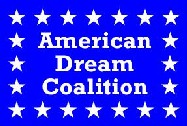
 |
|
|
Smart Growth's Real Goal: More CongestionSmart-growth advocates often refer to the costs of congestion. Yet the effects of their policies will be to increase congestion. Numerous plans and documents reveal that smart-growth planners actually think congestion is a good think because it might convince a few people to stop driving. Traffic engineers historically rank congestion using a letter grade, A meaning nearly no traffic and F meaning stop-and-go traffic. This rating system was developed to prioritize transportation investments. Engineers would generally set a target grade, usually C or D. New construction funds would be directed to any road whose traffic levels threatened to exceed that grade. Today, smart-growth planners often downgrade these targets to E or even F. In Portland, planners have set a target for most freeways and other major roads of F during rush hour and E the rest of the day. As a practical matter, this means planners can divert transportation funds to rail transit even if means highway congestion falls to level F. But more than that, planners seem to want congestion to increase. Congestion "signals positive urban development" in residential and commercial areas, says Metro, Portland's regional planning agency. "Transportation solutions aimed solely at relieving congestion are inappropriate" in these areas." When asked why planners were willing to let congestion deteriorate to level F, Metro's director of transportation planning answered that efforts to relieve congestion " would eliminate transit ridership." The notion that congestion is a good thing is echoed by many other transit and transportation planning agencies around the country. Reducing congestion "would produce negative impacts on transit usage," says the Minneapolis-St. Paul Metropolitan Council, while under increasing congestion "alternative travel modes will become more attractive." Deliberately increasing highway congestion to promote transit is the kind of bad idea that could only come from government. Telephone companies wouldn't dare give people busy signals in order to sell more mobile phones because they face so many competitors. But the government has near-monopoly control over both transit and highways. In some cases, such as the Twin Cities, there is a clear conflict of interest since the agency that does all transportation planning for the region also runs the region's transit system. Naturally, the agency would want to spend 70 percent of transportation funds on transit rather than let more be spent by another agency on roads. But even where no such conflict of interest exists, smart-growth planners are often promoting congestion because they regard transit has somehow superior to autos. One way they are doing so is through activities euphemistically described as traffic calming. Traffic calming really means congestion building, as it consists of putting barriers in roads to slow traffic and reduce traffic flow capacities. Traffic calming is often sold as a form of pedestrian safety, but studies show that for every pedestrian's life saved by traffic calming, more than thirty people will die due to delays to emergency service vehicles. |